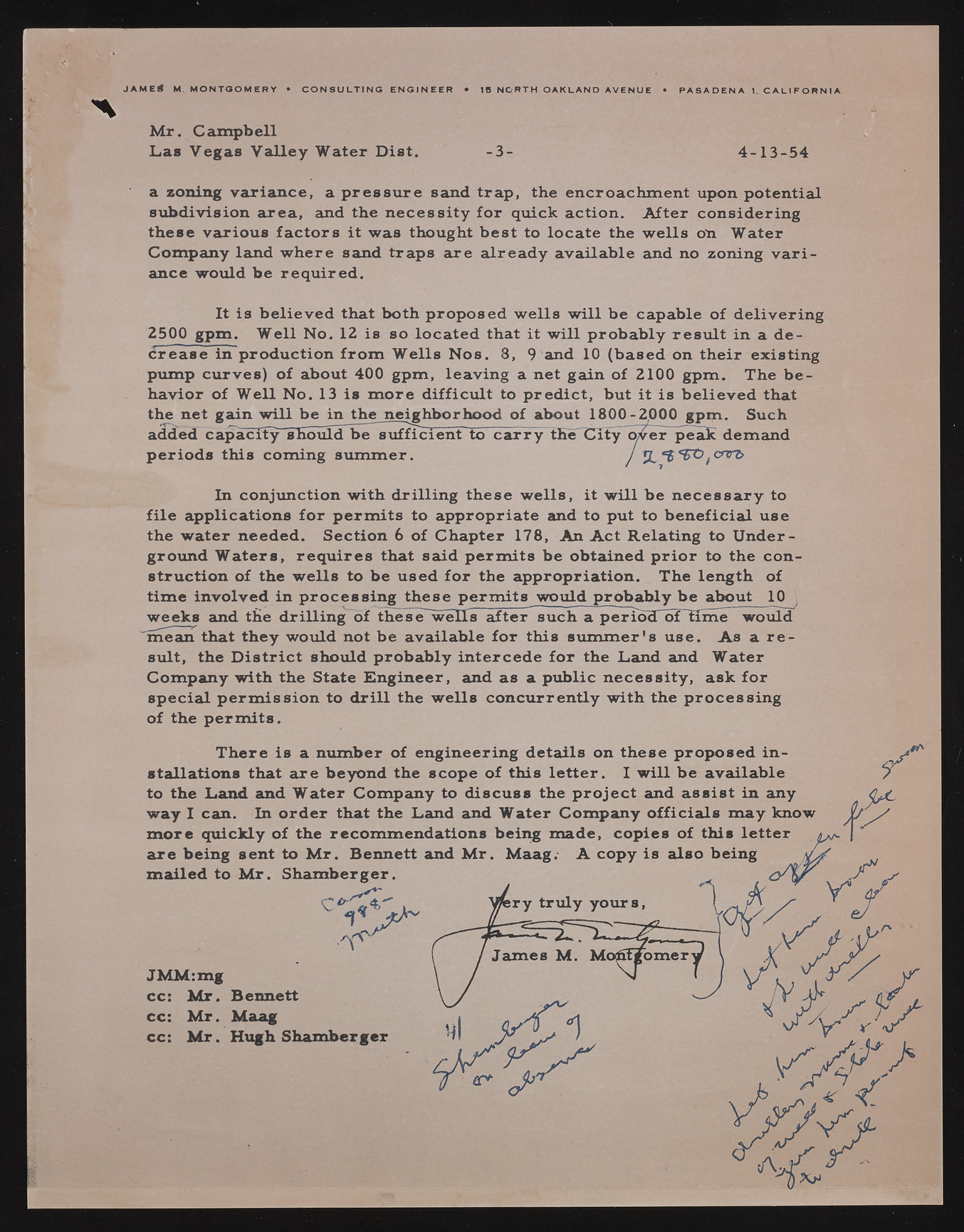Copyright & Fair-use Agreement
UNLV Special Collections provides copies of materials to facilitate private study, scholarship, or research. Material not in the public domain may be used according to fair use of copyrighted materials as defined by copyright law. Please cite us.
Please note that UNLV may not own the copyright to these materials and cannot provide permission to publish or distribute materials when UNLV is not the copyright holder. The user is solely responsible for determining the copyright status of materials and obtaining permission to use material from the copyright holder and for determining whether any permissions relating to any other rights are necessary for the intended use, and for obtaining all required permissions beyond that allowed by fair use.
Read more about our reproduction and use policy.
I agree.Information
Digital ID
Permalink
Details
More Info
Rights
Digital Provenance
Publisher
Transcription
J A M E S M. M O N T G O M E R Y • C O N S U L T I N G E N G I N E E R • 15 N O R T H O A K L A N D A V E N U E • P A S A D E N A 1. C A L I F O R N I A Mr. C ampb ell Las Vegas Valley Water Diet. -3- 4-13-54 a zoning variance, a pressure sand trap, the encroachment upon potential subdivision area, and the necessity for quick action. After considering these various factors it was thought best to locate the wells ofn Water Company land where sand traps are already available and no zoning variance would be required. It is believed that both proposed wells will be capable of delivering 2500 gpm. Well No. 12 is so located that it will probably result in a decrease in production from Wells Nos. 8, 9 and 10 (based on their existing pump curves) of about 400 gpm, leaving a net gain of 2100 gpm. The behavior of Well No. 13 is more difficult to predict, but it is believed that the net gain will be in the neighborhood of about 1800-2,000 gpm. Such added capacity^shoxild^be sufficient to carry the'City^/^er peak demand periods this coining summer. / 5L <5"©/c^'2> In conjunction with drilling these wells, it will be necessary to file applications for permits to appropriate and to put to beneficial use the water needed. Section 6 of Chapter 178, An Act Relating to Underground Waters, requires that said permits be obtained prior to the construction of the wells to be used for the appropriation. The length of time involved in processing these permits _would probably be about 10 weeks and the drilling of these~wells after such a period7of~Eime would mean that they would not be available for this summer's use. As a result, the District should probably intercede for the Land and Water Company with the State Engineer, and as a public necessity, ask for special permission to drill the wells concurrently with the processing of the permits. There is a number of engineering details on these proposed installations that are beyond the scope of this letter. I will be available to the Land and Water Company to discuss the project and assist in any way I can. In order that the Land and Water Company officials may know more quickly of the recommendations being made, copies of this letter

